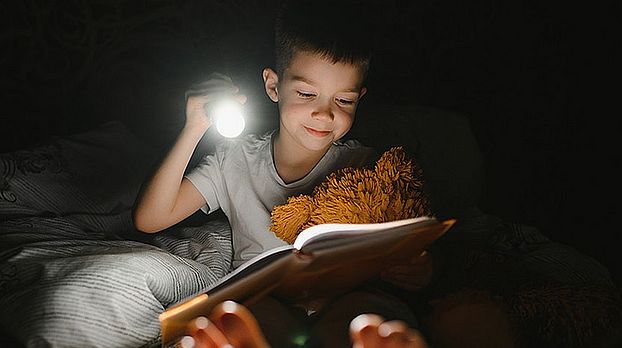/ News, Research, Studies
Light color is less important for the internal clock than originally thought (de Quervain Lab)
Light in the evening is thought to be bad for sleep. However, does the color of the light play a role? Researchers from the University of Basel and the Technical University of Munich (TUM) compared the influence of different light colors on the human body. The researchers’ findings contradict the results of a previous study in mice.
Vision is a complex process. The visual perception of the environment is created by a combination of different wavelengths of light, which are decoded as colors and brightness in the brain. Photoreceptors in the retina first convert the light into electrical impulses: with sufficient light, the cones enable sharp, detailed, and colored vision. Rods only contribute to vision in low light conditions allowing for different shades of grey to be distinguished but leaving vision much less precise. The electrical nerve impulses are finally transmitted to ganglion cells in the retina and then via the optic nerve to the visual cortex in the brain. This region of the brain processes the neural activity into a colored image.
What influences the internal clock?
Ambient light however does not only allow us to see, it also influences our sleep-wake rhythm. Specialised ganglion cells are significantly involved in this process, which - like the cones and rods - are sensitive to light and react particularly strongly to short-wavelength light at a wavelength of around 490 nanometres. If light consists solely of short wavelengths of 440 to 490 nanometres, we perceive it as blue. If short-wavelength light activates the ganglion cells, they signal to the internal clock that it is daytime. The decisive factor here is how intense the light is per wavelength; the perceived color is not relevant.
"However, the light-sensitive ganglion cells also receive information from the cones. This raises the question of whether the cones, and thereby the light color, also influence the internal clock. After all, the most striking changes in brightness and light color occur at sunrise and sunset, marking the beginning and end of a day," says Dr. Christine Blume. At the Centre for Chronobiology of the University of Basel, she investigates the effects of light on humans and is the first author of a study investigating the effects of different light colors on the internal clock and sleep. The team of researchers from the University of Basel and the TUM has now published its findings in the scientific journal "Nature Human Behaviour".

